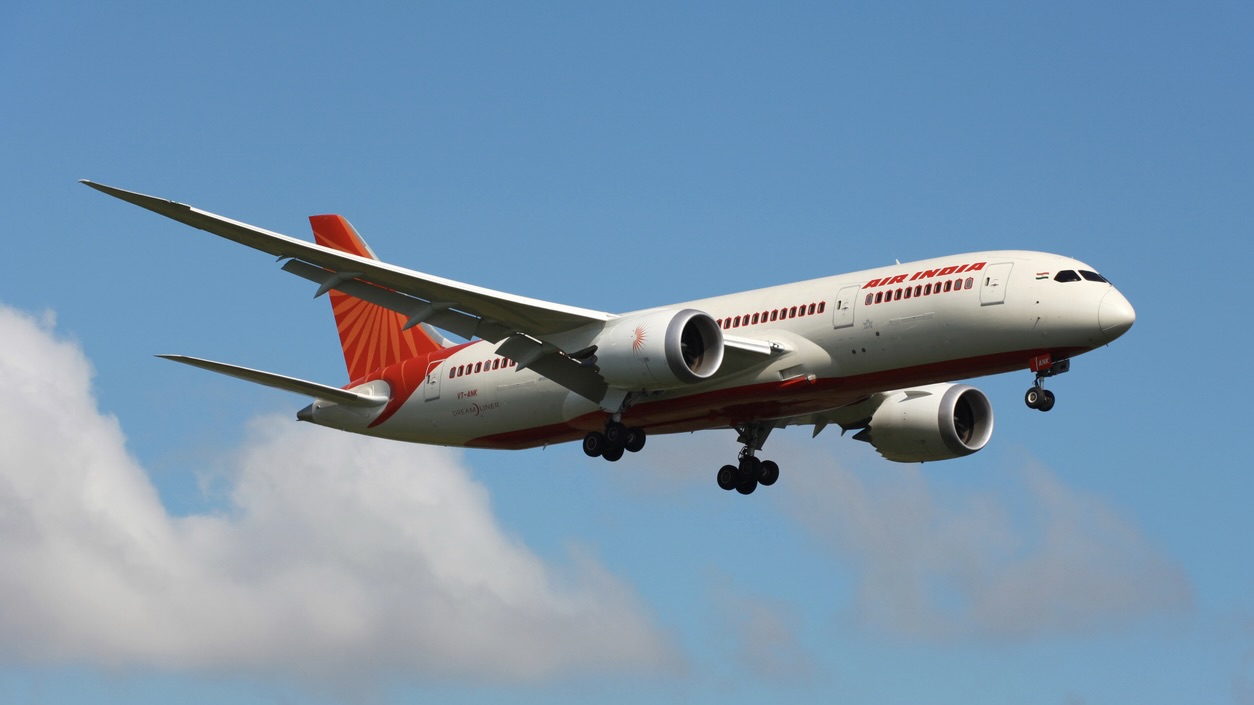Though Thursday’s crash marks the first fatal accident involving a 787, it is far from the aircraft’s first safety scare. From the outset, the Dreamliner programme was plagued by overambition, delays, and decisions driven more by Wall Street than safety.
Published Jun 12, 2025 | 8:25 PM ⚊ Updated Jun 13, 2025 | 11:50 AM

A Boeing 787.
Synopsis: The catastrophic crash of Air India flight AI171, a Boeing 787 Dreamliner, shortly after take-off from Ahmedabad on Thursday killing all but one passengers on board has once again renewed scrutiny of Boeing’s safety practices. Though this is the first fatal accident involving the Dreamliner, the aircraft has been mired in controversies right form its inception two decades ago.
The crash of Air India flight AI171, a Boeing 787 Dreamliner, just minutes after take-off on Thursday, 12 June from Ahmedabad’s Sardar Vallabhbhai Patel International Airport, killing 241 onboard and at least three students on the ground, has reignited scrutiny over the beleaguered American aerospace giant.
While Boeing’s 737 MAX line has drawn the most scrutiny in recent years, the 787 Dreamliner is widely seen as the origin point of the company’s long decline from engineering excellence to a culture of cost-cutting – best chronicled in the hit 2022 documentary Downfall: The Case Against Boeing.
The company’s stock dropped by more 8 percent in pre-market trading following news of the crash.
Though Thursday’s crash marks the first fatal accident involving a 787, it is far from the aircraft’s first safety scare. Among recent incidents:
Launched in 2004, the Dreamliner promised to revolutionise commercial aviation: a 20 percent improvement in fuel efficiency, quieter engines, greater passenger comfort, and a fuselage made largely of composite materials – a first for a commercial jetliner.
But from the outset, the programme was plagued by overambition, delays, and decisions driven more by Wall Street than safety.
The first test flight, initially slated for 2007, was delayed by over two years. It finally entered commercial service with All Nippon Airways in 2011, years behind schedule and burdened by ballooning costs.
Crucially, Boeing broke with decades of internal production tradition, outsourcing much of the 787’s manufacturing and design. Key fuselage sections, wings, and software systems were produced by suppliers across the globe, many of whom struggled to meet Boeing’s standards.
Internal communications and later whistleblower reports revealed how critical integration problems were concealed or waved through to maintain delivery timelines.
Boeing has since bought back several of its major suppliers, including Spirit AeroSystems, and resumed in-house inspections after years of delegation and oversight failures.
The Dreamliner’s first major crisis came in 2013, just two years after it entered commercial service.
In January, two near-catastrophic battery fires occurred within days.
A Japan Airlines 787 caught fire while parked at Boston Logan Airport, and an ANA flight made an emergency landing after its lithium-ion battery began smoking in-flight.
Investigations identified thermal runaway risks in the aircraft’s battery system – a choice Boeing had pushed through with special FAA waivers, despite known dangers.
The US Federal Aviation Authority took the extraordinary step of grounding the entire global 787 fleet.
The aircraft remained grounded for three months while Boeing redesigned the battery enclosure system. India, Japan, and other major aviation regulators followed suit.
Between 2019 and 2024, a wave of quality control failures further dented the Dreamliner’s reputation – particularly at Boeing’s North Charleston facility in South Carolina.
Among the most troubling issues:
These scandals led to repeated halts in Dreamliner deliveries, including a two-year pause starting in 2021. The FAA stripped Boeing of its delegated inspection authority, requiring direct FAA certification of each aircraft – a rare and damning move.
From 2014 through 2024, whistleblowers sounded the alarm about systemic negligence inside Boeing’s factories – often at great personal risk.
John Barnett, a veteran quality control manager, warned of defective parts being installed on Dreamliners and alleged pressure to ignore safety violations. He was found dead in 2024 in what police called a suicide, days after testifying in court during an ongoing lawsuit against Boeing.
Sam Salehpour, a Boeing engineer, testified before the US Senate in 2024 that workers at the Charleston plant were instructed to forcibly fit fuselage sections together, sometimes by “jumping on parts.”
He estimated over 1,000 Dreamliners could be affected and warned of possible premature fatigue failures.
Richard Cuevas, a mechanic at Boeing supplier Spirit AeroSystems, accused the company of improperly drilling holes in pressure bulkheads – a key structural component. He was dismissed after filing complaints.
FAA audits in 2024 confirmed “gaps” in Boeing’s safety protocols and cited a culture where employees feared retaliation for reporting issues – a direct contradiction to the aviation industry’s “just culture” principles that promote transparency and accountability.
(Edited by Dese Gowda)
